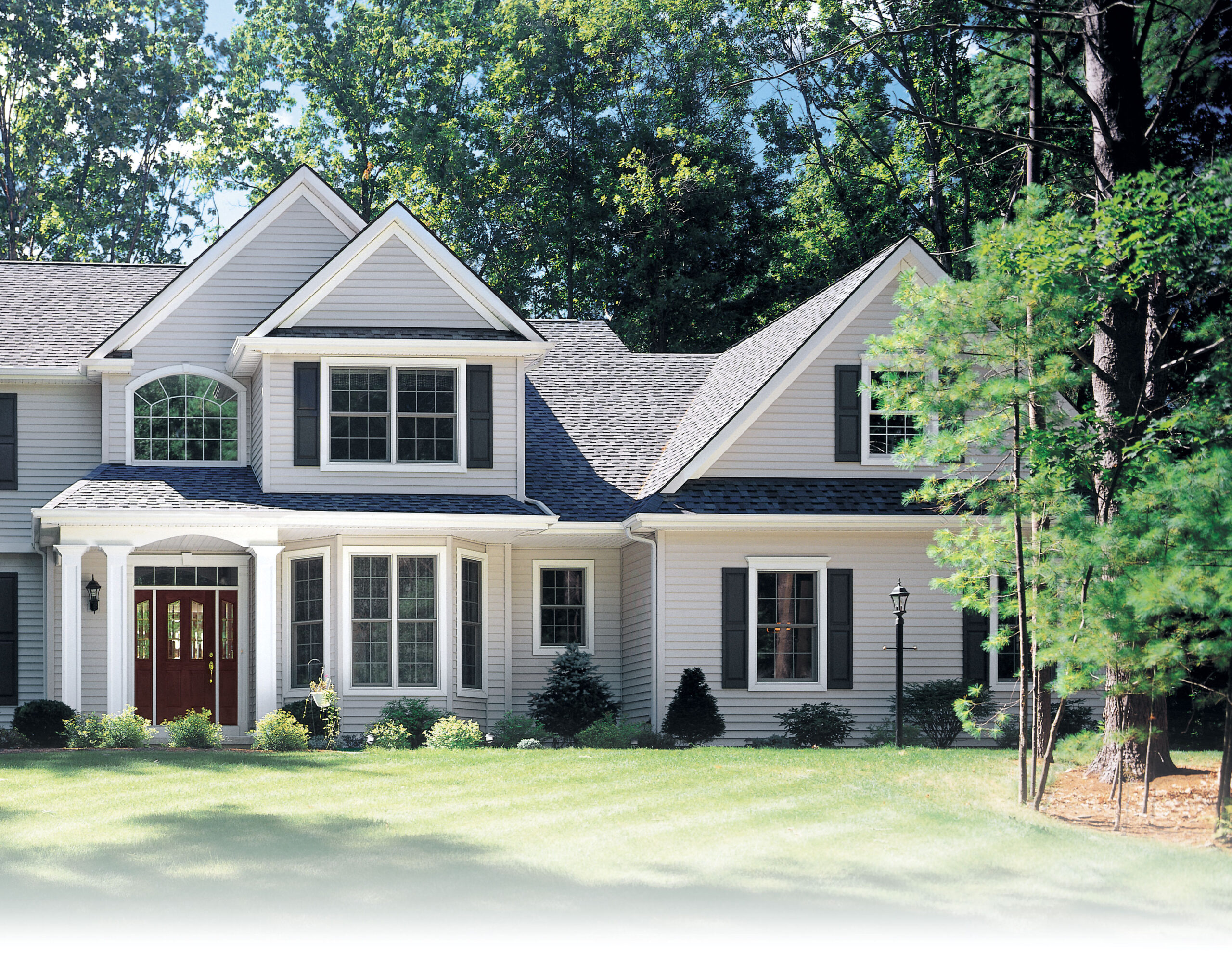If you’re a homeowner in eastern Iowa, you know our seasons don’t play around. From bitter winter winds to humid summer heat, your windows and doors are on the front lines every single day. And if they’re not doing their job? You’re the one paying the price in drafts, higher energy bills, and that nagging sense that your home just isn’t as comfortable or secure as it should be.
When to Replace | Secure | Materials | Maintenance | Front Door
So, we’re here with StraightTALK. Real answers to the real questions we hear from homeowners like you. Whether you’re thinking about a remodel or just tired of wrestling with sticky windows and warped doors, this guide is for you.
We’ll cover the signs it’s time to replace, what sets high-quality windows and doors apart, and how to make smart choices that improve comfort, boost curb appeal, and make your home more energy efficient year-round.
How do I know when it’s time to replace my windows or doors?
You’ll know it’s time to replace your windows or doors when they no longer do their job: keeping your home comfortable, secure, and energy efficient. If you notice drafts, moisture between glass panes, difficulty opening or closing, or visible warping or rotting, that’s your home waving a red flag. Older homes in eastern Iowa often deal with harsh winters and humid summers, which wear down even well-built windows and doors over time.
Your windows and doors must protect your home, keep it comfortable, and save energy. When they fail at any of those jobs, it’s time to take them seriously. Below are signs (some subtle, some obvious) that your home is telling you: “Let’s upgrade.”
1. Drafts, Cold Spots & Uneven Temperatures
If certain rooms feel noticeably colder or hotter than others, that’s your first red flag. Quality windows and doors have multiple seals, insulated frames, and better glazing. Older units or failing seals allow conditioned air to escape or outside air to creep in.
2. Rising Heating & Cooling Costs
You’ve probably upgraded your appliances or HVAC system, but if your utility bills are climbing anyway, don’t ignore windows and doors as suspects. Studies show that windows and doors account for a significant percentage of a home’s energy loss. If a replacement pays for itself in energy savings over time, you’re ahead of the game.
3. Condensation or Moisture Between Panes
Moisture or fogging between glass panes is evidence that the insulating seal has failed. Once that happens, the window’s insulating value plummets. The glazing pack is compromised, and the window is essentially acting like a single pane again. That’s a real performance hit.
Also, watch for condensation or dampness around the frames or sills. Persistent moisture leads to rot, mold, and frame warping. Problems that often extend beyond just the window itself.
4. Difficulty Opening, Closing, or Locking
Stiff windows that bind or require force to open or close are signaling wear and tear. Over time, frames warp, hardware loosens or corrodes, and tracks or hinges deteriorate. When smooth operation is gone, so is part of your home’s comfort and security.
Similarly, for doors: sagging, misalignment, or a deadbolt that doesn’t line up are warnings. If adjustments don’t fix the problem, replacement is likely the better long-term solution.
5. Frame Damage or Deterioration
Check for rot, rust, peeling or blistering finishes, or warped wood frames. In older homes, water intrusion and settling often damage window and door frames first. You don’t have to wait for catastrophic failure, any signs of decay should get your attention.
6. Sound Intrusion
Do you hear neighbors, traffic, or lawn equipment louder than you should inside? Poor window and door performance means more outside noise penetrates your home. Modern replacements offer better acoustic insulation (think laminated glass, tighter seals, and heavier frames).
7. UV Damage, Fading, and Glass Imperfections
If your flooring, furniture, or finishes are fading over time, your windows may not be filtering UV rays effectively anymore. Also watch for pitting, scratches, or glass that’s bubbled or warped. Optics tell you something is failing. Quality windows often come with better coatings or films to block damaging UV light.
8. Age & Warranty Considerations
Even if your windows and doors seem “okay,” age is a factor. Most high-quality units are engineered to last 20–30 years under normal conditions. If your windows are nearing (or beyond) that range, replacement may be smart before failures multiply. Also check warranties. If yours has expired or shows signs of decline, you’re risking more than cosmetic loss.
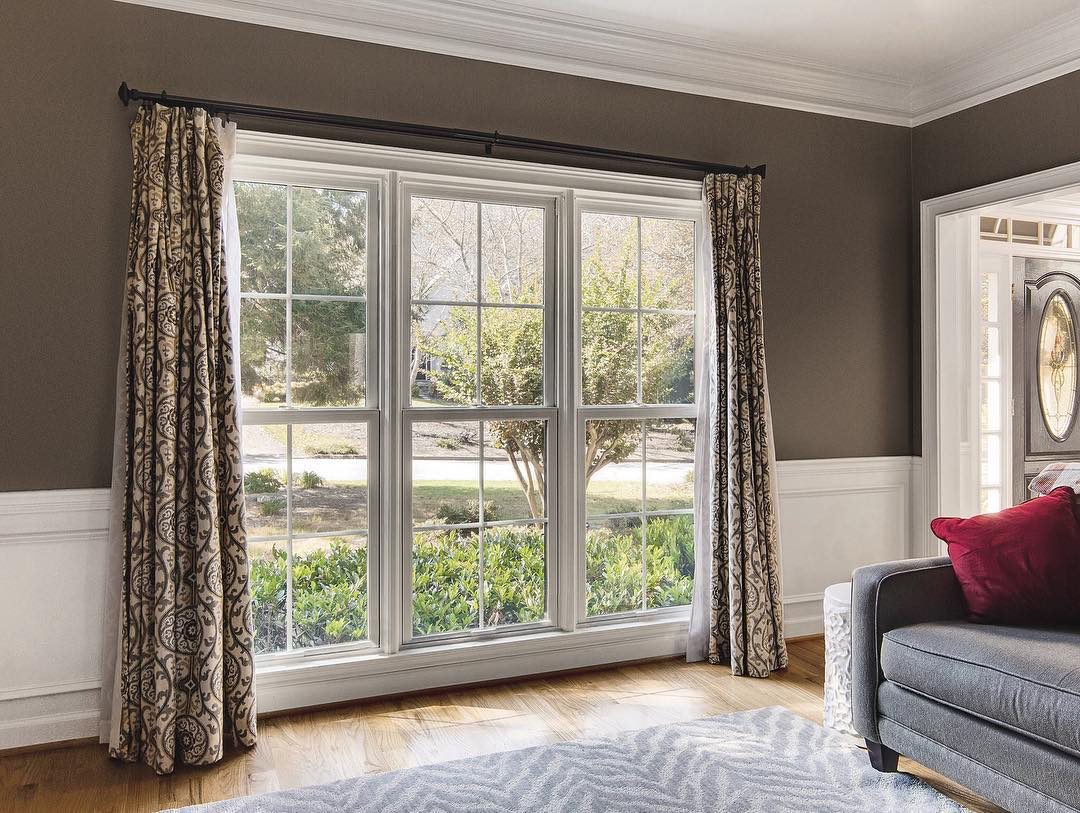
StraightTALK Remodeling Tip
Not all signs of window or door failure are obvious. On a chilly day, stand near your closed window or door. If it feels noticeably colder, that’s heat loss happening in real time. Also check for condensation between window panes, which means your seal is broken and efficiency is out the window (literally).
What makes a window or door secure?
A secure window or door keeps the elements where they belong. A secure window or door should create a tight, weather-resistant seal that blocks out wind, rain, snow, and extreme temperatures. Look for these key features:
- Compression Weatherstripping: A flexible material around the edges of doors or windows that compresses when closed to form a tight seal. It helps block drafts, moisture, and outdoor noise.
- Insulated Glass (IG Units): Windows with two or more panes of glass separated by air or inert gas (like argon) to reduce heat transfer. This improves energy efficiency and reduces condensation.
- Multi-Chambered Frames: Window and door frames that have multiple internal air pockets. These chambers improve insulation, increase structural strength, and help reduce noise transmission.
- Well-Fitted Flashing: Thin materials (usually metal or waterproof tape) installed around quality windows and doors to direct water away from the building envelope. Proper flashing prevents leaks and water damage around the frame.
Each of these elements plays a role in sealing your home against Iowa’s weather, keeping heat in during the winter, cool air in during the summer, and water out all year long.
Can I reuse my existing window or door trim?
If your existing trim is in excellent condition and you’re not changing the window size or type, it might be possible to reuse it. However, in many remodeling situations, especially with older homes, the trim has either deteriorated or isn’t compatible with modern replacement windows and doors. Custom trim can be recreated to match the original look while giving your new high-quality windows or exterior door a seamless, finished appearance.
Do I need a storm door?
Storm doors aren’t always necessary, especially with today’s high-quality exterior doors that offer superior insulation and durability. However, in eastern Iowa, where the weather can be extreme, a storm door can provide an extra layer of protection against wind, rain, and snow. They also help improve energy efficiency by creating an insulating air pocket and can provide ventilation with built-in screens during the warmer months.
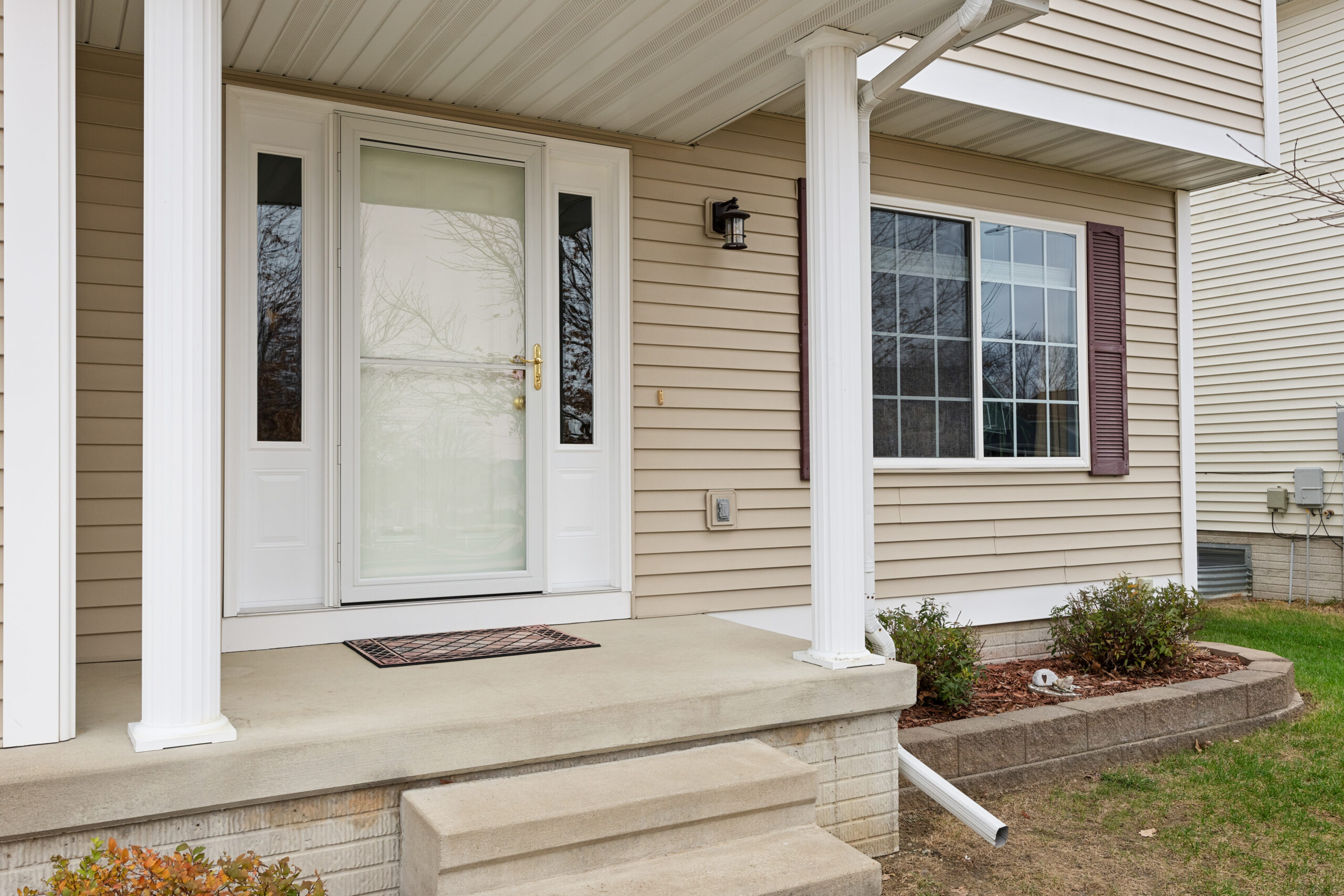
StraightTALK Remodeling Tip
Some homeowners opt for full-view storm doors to showcase their beautiful new entry doors while keeping bugs and debris out. It’s a functional and stylish addition.
What’s the difference between vinyl, fiberglass, and wood windows (or doors)?
Choosing the right material for quality windows and exterior doors is about performance, longevity, maintenance, and how well each material handles Iowa’s extreme weather swings. Below is how we see vinyl, fiberglass, and wood (and door-specific options like steel) stacking up based on our experience and the technical factors we value most in our homes, and yours.
Vinyl: Affordable, Low-Maintenance, but with Limits
Pros:
- Cost-Effective: Vinyl frames tend to come in at a lower up-front cost compared to fiberglass—often a few hundred dollars less per unit (depending on style, glazing, and size).
- Low Maintenance: You won’t need to paint or stain vinyl. A rinse with soap and water is typically enough to keep it looking decent.
- Fade-Resistant Options: Higher quality vinyl and UV-protected versions stay stable in color over time with minimal fading.
Cons / Trade-offs:
- Strength & Durability: Vinyl can be more prone to warping, especially in extreme heat or under direct sun exposure. Over time, that warping can loosen seals or cause air infiltration.
- Thermal Expansion & Contraction: Because vinyl is thermoplastic, it expands and contracts with temperature changes. That movement puts stress on seals, frames, and hardware.
- Performance Ceiling: There’s a performance ceiling. Beyond a certain point, you’ll need more robust materials to gain additional insulation or structural rigidity.
In short, vinyl can be a wise choice depending on your budget, but it does have limitations when used in harsh climates or in homes where you expect top-tier performance for decades.
Our StraightTALK Take
Our Hometown Restyling preferred window product is vinyl that is reinforced with fiberglass, so that it retains the better qualities of both materials: vinyl and fiberglass.
Fiberglass: Strength, Stability & Long-Term Value
Fiberglass frames tend to deliver a blend of durability, stability, and performance for the long haul.
Pros:
- Superior Strength & Shape Retention: Fiberglass frames are reinforced with glass fibers, making them roughly eight times stronger than standard vinyl (as per comparisons in your earlier article). Because they resist warping, twisting, or sagging under temperature extremes, they hold their shape and maintain seal integrity better over the years.
- Thermal Stability: Fiberglass is not a great conductor of heat; it doesn’t expand or contract significantly with temperature swings. That helps maintain tight seals and energy efficiency.
- Longevity: In your old article, you noted that vinyl windows might last “5–50 years” depending on quality, while fiberglass windows can survive “50–100 years” under the right conditions.
- Finish Options: High-end fiberglass units may use acrylic-capped surfaces or durable finishes that resist fading. Even though some lower-quality fiberglass may require occasional repainting, the premium versions hold color very well.
Cons / Considerations:
- Higher Upfront Cost: Fiberglass usually comes at a premium compared to vinyl. A vinyl window might run $400–$1,600 installed, while a comparable fiberglass unit may cost $800–$2,600 installed.
- Weight: Fiberglass windows are heavier than vinyl, which can make installation more labor-intensive and increase installation costs slightly. This also means they’re not ideal for every retrofit application where existing framing might be delicate.
- Corner Construction Quality: Many brands use mechanically fastened corners, which over time may separate slightly and allow air or water infiltration if not properly sealed. That’s why manufacturer selection is crucial. We believe there are a few fiberglass manufacturers who do it right: with fully bonded, structurally sound corners that maintain long-term integrity. But others take shortcuts in their manufacturing, leading to less-than-desirable outcomes.
- Surface Treatment Matters: If the frame isn’t well capped or protected, over many decades, it might show signs of fading. That said, top-tier brands minimize that issue.
Our StraightTALK Take
For most homeowners in eastern Iowa, fiberglass reinforced windows or doors tends to hit a “sweet spot” balance between durability and long-term value. If you plan to stay in your home 15 years or longer, the extra cost is often justified by better performance, fewer maintenance needs, and greater resale appeal.
Wood: Beauty, Tradition & Maintenance Trade-offs
Pros:
- Natural Aesthetics: Wood has enduring visual appeal and works especially well for historic homes or architectural styles where natural materials are expected.
- Insulation Quality: Wood is a naturally good insulator (though not the best of all) and helps manage temperature differences.
Cons / Trade-offs:
- High Maintenance: Wood requires regular sealing, staining, or painting to protect it from moisture, insects, rot, or UV damage. In Iowa’s freeze-thaw cycles and summer humidity, neglecting maintenance quickly shortens the lifespan.
- Vulnerability to Moisture & Warping: Wood exposed to moisture (especially at sill, jamb, or trim interfaces) is susceptible to rot or swelling. At those points, even small leaks cause big damage.
- Cost and Long-Term Value Risk: Over time, the maintenance burden plus occasional repair costs can erode the perceived savings at installation.
When Wood Still Makes Sense
If you live in a historically preserved neighborhood or your home’s character depends on wood window profiles, wood (or wood-clad with exterior protection) remains a viable choice. Just be aware that the maintenance calendar is part of your ongoing costs to maintain the look you’re going for.
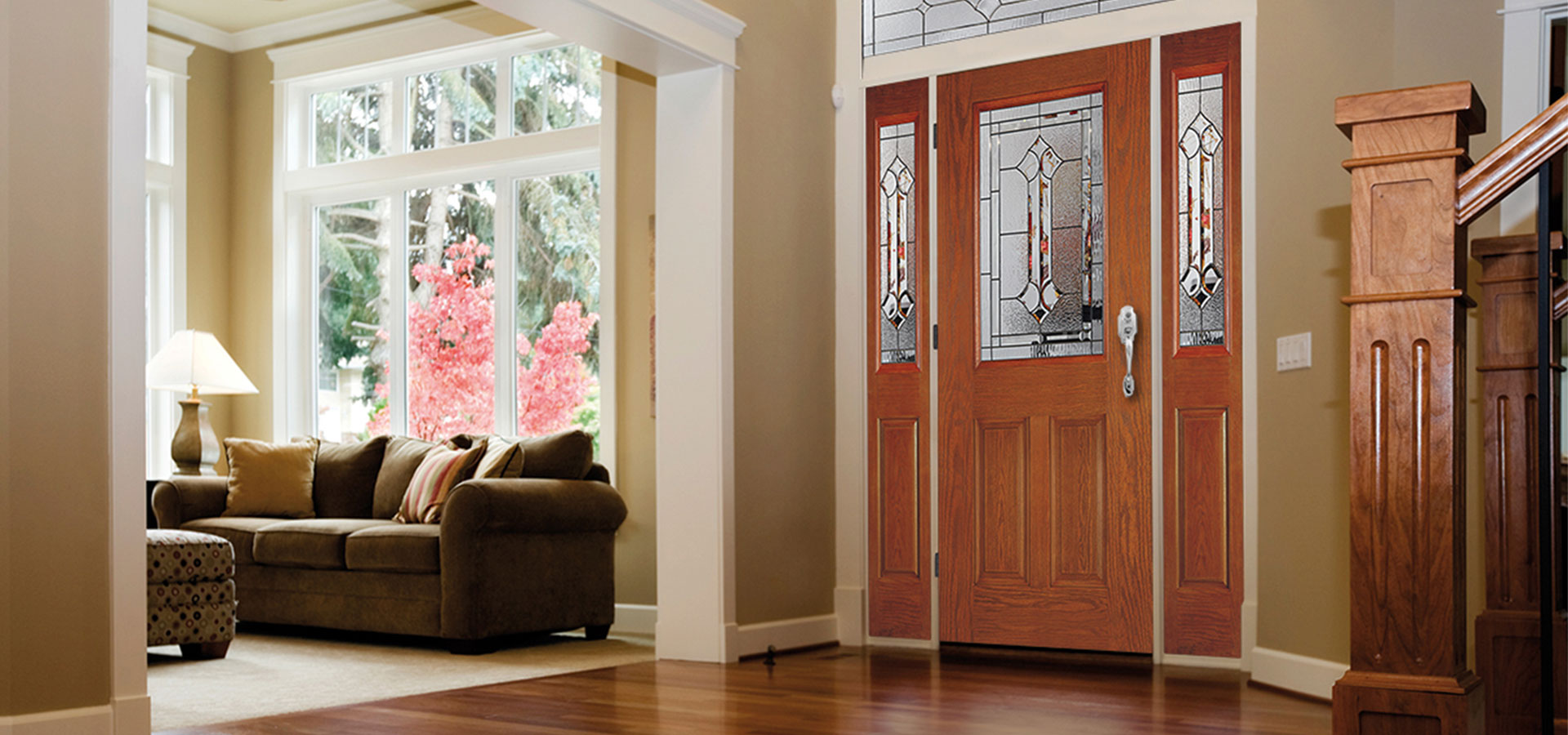
Window vs. Door Considerations (Steel, Fiberglass, Wood Doors)
While the above focuses mainly on windows, many of the same materials and principles apply to entry doors, but with a twist.
- Steel doors are generally less expensive than fiberglass and offer excellent security when properly reinforced. They are heavier, more prone to dents, and their finish or paint layer must be well-maintained to avoid rust over time.
- Fiberglass Entry Doors: Often outperform steel in harsh conditions. They resist dents, won’t rust, and can better endure temperature swings and direct sunlight without warping or sagging. For south- or west-facing doors, fiberglass is particularly advantageous, which we’ve recommended before in past guidance.
- Wood Doors: Beautiful and classic, but subject to the same moisture and maintenance challenges. If you choose wood, make sure you have overhangs, good flashing, and consistent maintenance to protect it.
Window and Door Material Snapshot
| Material | Upfront Cost | Longevity & Durability | Thermal Stability | Maintenance Needs | Ideal Use Cases |
| Vinyl | Lower | Moderate | More expansion/ contraction | Low | Budget projects; mild climates |
| Fiberglass | Higher | High | Very stable | Low-to- moderate | Best balance for Iowa homes |
| Wood | Variable | Moderate | Good (with care) | High | Historic homes, premium aesthetics |
| Steel (Door focus) | Lower-to-mid | Good | Good, if a proper finish | Moderate | Security- oriented doors on less sun-exposed facades |
What kind of maintenance do new windows and doors need?
New, high-quality windows and doors need much less maintenance than their older counterparts, but a little care goes a long way. Clean window tracks, glass, and hardware regularly to ensure smooth operation. Inspect seals and weatherstripping annually and replace them if needed to maintain energy efficiency.
For new doors, keep hinges lubricated and check the finish for signs of wear. Fiberglass and vinyl doors generally need only occasional cleaning with soap and water, while wood doors should be resealed or refinished periodically to prevent damage.
Hometown Restyling offers routine maintenance services that help bring peace of mind. Our team checks for window and door abnormalities, seal degradation, hardware wear, and insulation issues. Catching minor problems early before they turn into expensive repairs. It’s one of the easiest ways to protect your investment and stay ahead of performance issues.
How long do modern windows and doors actually last?
Most quality windows and doors last 20 to 30 years or more, depending on the material and climate. Vinyl and fiberglass products tend to last the longest with minimal upkeep, while wood may require more maintenance but can also go the distance if well cared for.
Manufacturer warranties are often a good indicator of expected lifespan. Look for high-quality products backed by warranties of 20 years or more for peace of mind. And our workmanship warranty ensures that we will back the installation of the window and door, so you know it is properly sealed and installed.
StraightTALK Remodeling Tip
Don’t skip the annual check-up. A quick inspection every spring and fall can catch minor issues before they become big headaches. Think of it like an oil change for your house.
How do I choose the right front door to boost curb appeal?
You choose the right front door to boost curb appeal by balancing style, material, and color with your home’s architecture. A well-chosen entry door can act as a statement piece that enhances your home’s character, invites visitors in, and even increases your property value.
Here in eastern Iowa, popular trends lean toward both functionality and timeless style. Homeowners are favoring low-maintenance materials like fiberglass or steel with woodgrain finishes for that classic look—especially in deeper tones like walnut, chestnut, or espresso.
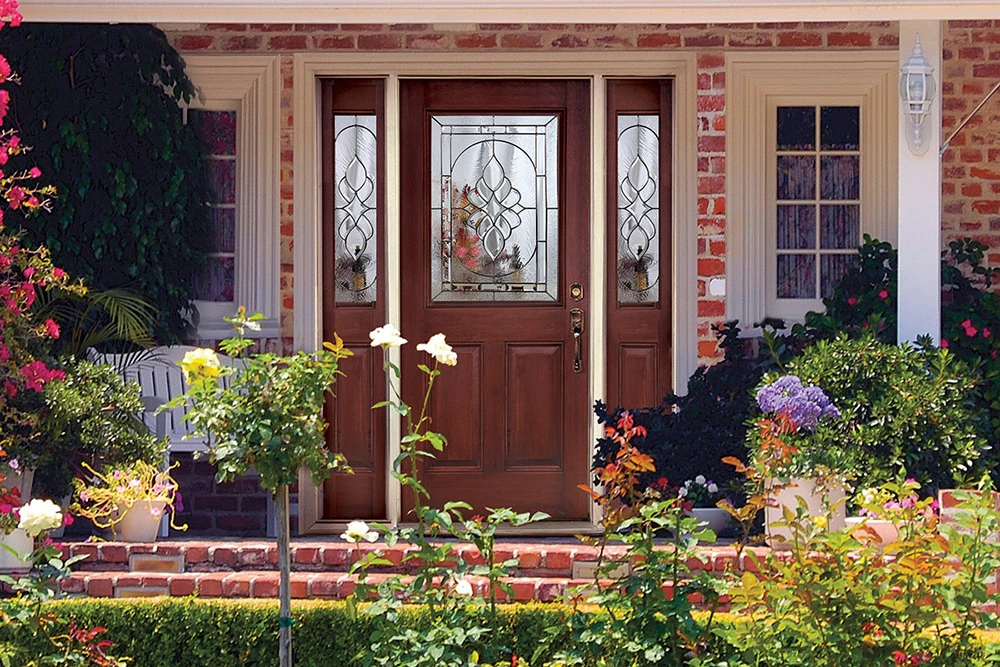
For traditional-style homes (think farmhouse or craftsman), panel doors with decorative glass inserts or sidelights are a big hit. These add light to the entryway while keeping a sense of structure and style. Pair that with matte black or aged bronze hardware, and you’ve got a front door that pops without screaming.
For more modern style homes, sleek fiberglass or steel doors in bold colors like deep navy or red are popular in eastern Iowa. These look great with clean lines and minimal trim. Glass elements, such as a vertical lite or frosted side panel, add a contemporary flair while still offering privacy.
If you’re thinking about resale, it’s worth noting that entry door replacements continue to deliver some of the best returns on investment. According to the 2025 Cost vs. Value Report, replacing your entry door can often recoup its cost on resale.
StraightTALK Remodeling Tip
Rich reds and deep wood tones never go out of style. Looking to make a bold statement? Ask us about custom glass designs that let your front door reflect your personality.
StraightTALK Wrap Up
High-quality windows and doors mean comfort, safety, and long-term savings. From reducing your energy bills to improving resale value, investing in well-made products makes a big difference.
Bonus Tip: Not sure where to start? Schedule a free consultation with us to talk about what is best for your eastern Iowa home. It’s the best way to get advice specific to your home and budget.
Ready to upgrade? Check out our energy-efficient window options built for eastern Iowa homes:
Energy-Efficient Windows in Eastern Iowa: What Homeowners Need to Know

